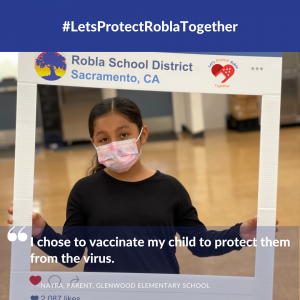Someone recently asked me, “So, what projects are you working on for your clients?” I wanted to respond, “What am I not working on for my clients?” It’s been a busy season, for sure!
I am incredibly grateful that my school district clients are in a position where they can plan ahead and grow their programs–having been in the COVID-19 journey alongside them, two years ago, we were sending out messages about schools being shut down, and then the quick transition into remote learning. One year ago, we were finalizing school reopening plans (remember those?!) and sending out messages to transition students back into in-person learning. School and programmatic marketing campaigns were essentially on hold for two years….and now, like a machine kicking into gear, we’re ramping up enrollment campaigns for schools, universal TK, and more. And other districts are recommencing processes they put on hold in March 2020. Here’s a snapshot of what I’ve been working on over the past couple of months:
Marketing and Promotional Campaigns
I feel kind of like Oprah…YOU get a marketing campaign…and YOU get a marketing campaign..and YOU get a marketing campaign…because every client is involved in at least one marketing campaign, and some have multiple campaigns happening:
- Dual Language Immersion Program marketing campaign: This campaign involves a combination of digital (email, web, social media, and video), print (rack card and flyer) and outreach (parent information meetings) to promote the district’s Dual Language Immersion Program. The video (produced by an in-house videographer) is currently being finalized, and click on the links to see the other marketing components.
- Preschool marketing campaign: This campaign also involves a combination of digital (email, web, social media, and video), print (rack card and flyer) and outreach to promote the district’s state preschool program. The campaign will also include a video (produced by an in-house videographer) and short video testimonials that can be shared on social media.
- Districtwide marketing campaign: This campaign involves bringing the district to the community, as a way to re-introduce the district to the community after two years of COVID-19 restrictions. This campaign involves a combination of digital (email, web, social media), print (school rack cards), lawn signs for every family in the district, outreach events, and sharing student and staff recognition with the community. This is key because many of the staff members live in the community and highlighting students and staff is a great way to show off the district’s best assets–its people–to the community.
- COVID-19 Vaccination Clinics: One of my clients was selected by the California Department of Public
 Health to host vaccination clinics at each of its schools, from December 2021-April 2022. This vaccination clinic campaign involves a combination of digital (email, web, and social media), print (flyers) and outreach (parent meetings) to promote the clinics and educate families about the safety of the vaccine. At the December clinic, I took pictures and collected testimonials from parents who had their children vaccinated, and then used these throughout the course of the social media campaign (see picture on the right).
Health to host vaccination clinics at each of its schools, from December 2021-April 2022. This vaccination clinic campaign involves a combination of digital (email, web, and social media), print (flyers) and outreach (parent meetings) to promote the clinics and educate families about the safety of the vaccine. At the December clinic, I took pictures and collected testimonials from parents who had their children vaccinated, and then used these throughout the course of the social media campaign (see picture on the right). - Continuation high school marketing: We worked with a videographer to complete a short-term marketing video (students were still wearing masks, so we used a combination of photography and video student testimonials), and I’m currently finalizing a promotional rack card that they can distribute to prospective students and in the community.
- Districtwide school digital downloads: I’ve written and designed 21 digital downloads that describe key pieces of information about each elementary, middle and high school in my client’s school district. The downloads describe each school, highlight what each school is known for, parent engagement opportunities, CTE programs and electives, and school activities. These are intended for new and prospective families (this client is near a military base, so transition is common in this district), as well as realtors.
Issues Management and Community Engagement
I know it seems like we’ve been dealing with issues management for the past two years, but there are some issues that my clients put on hold that they are now revisiting:
- School consolidation: With the state of California experiencing declines in student enrollment, there are some areas of the state–where costs for housing and the overall cost of living are higher– that are experiencing these declines more steeply, both before the pandemic, and even more increasingly since, due to the increase in companies allowing employees to work remotely.
Prior to the pandemic, I worked with one client on the school consolidation issues management, communication strategy and community engagement, and now I am working with the same client on this process again. This is a challenging situation, pre-pandemic, and after families have dealt with shifting to remote learning then returning to in- person learning, emotions are higher when facing another situation where children and families need to encounter yet another transition. As a result a parent protest occurred, and media relations went into full gear.Keeping clear and transparent communication, compassion and empathy at the forefront is critical.
- Improving equity and diversity in a gifted and talented school: I am working with another client on facilitating the community engagement process around improving the equity and diversity of an existing gifted and talented education school. This is a hot-button issue in areas like New York City and Oakland, where processes did not incorporate a solid community engagement approach. There are a number of underlying considerations with schools that are meeting the needs of accelerated and gifted learners, and approaches to problem-solving cannot be done with blinders on.
Social Media Management
Social media management, when done consistently, is an excellent way to showcase what’s happening in a district. With so many media stories and dialogues about controversial issues (whether real or imagined) in public education, a district’s social media posts can show their audiences what’s really happening in public education each day.
I’m currently managing two clients’ social media accounts on Facebook and Twitter. For each client, I create consistently branded visuals, a voice that is unique to their district, and utilize a strategy that incorporated at least daily posts, and, on average, three posts per day. One thing I keep finding is that when you highlight a district’s best assets–its people and students–its social media audience responds with support, encouragement and enthusiasm. Building that positive affinity helps when less-than-positive matters (trustee by district, anything COVID-restriction related) need to be posted, as well.
So, what are your priorities, and what are you working on? Drop us a note in the comments below, or contact us if you need any assistance!









